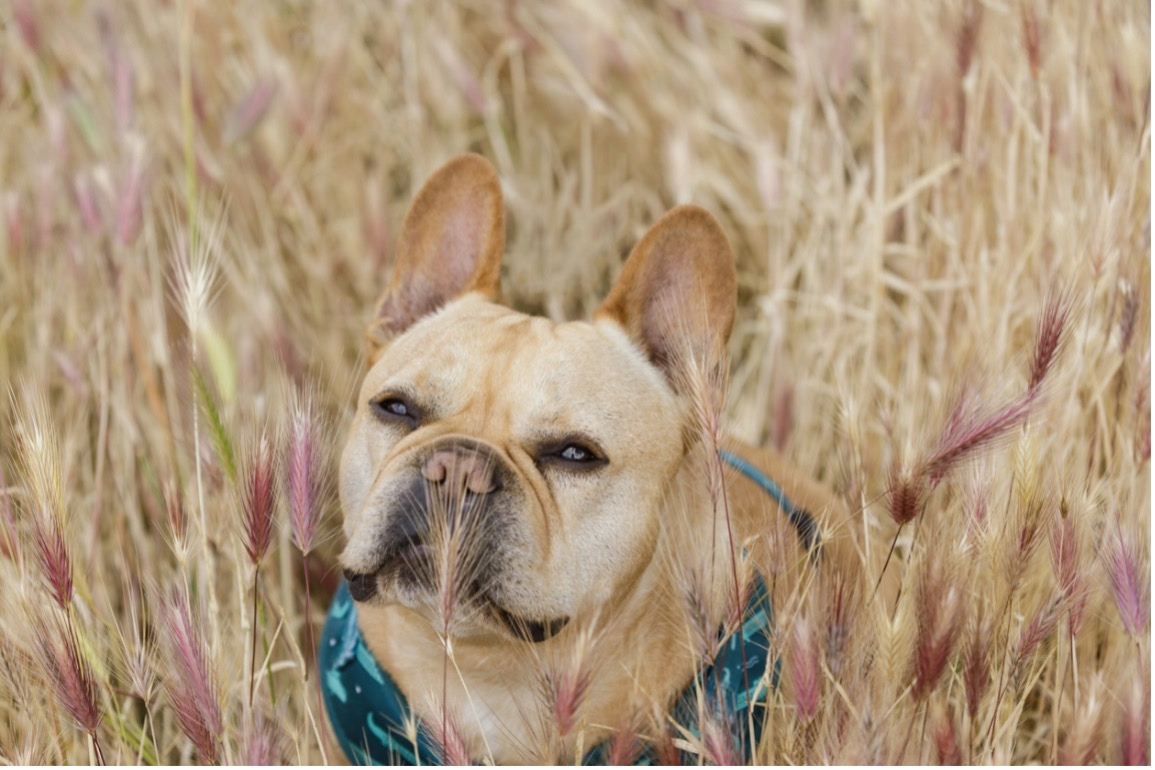Foxtails cause the most trouble during spring and summer during the late months. Dogs are especially at risk. Outside cats can also be at risk, but since most cats are skillful groomers and adept at removing them before they cause problems, most foxtail victims are dogs.
What Are Foxtails?
Foxtail is a small spiky cluster, also called an awn, containing the seeds of certain types of grass. They have evolved to have sharp tips for burrowing into the ground better after the wind blows them to a new area. Their spiny structures can dig their way into pets’ fur, skin, ears, eyes, noses, mouths, and genitals and are difficult to remove. Because they can burrow into small places or under a pet’s fur so quickly, it can be difficult for pet parents to see the foxtails.
Symptoms of Foxtail
They are dangerous to pets because a dog or cat’s body cannot process or break down foxtails.
Below are symptoms your pet may have foxtails. Note, these symptoms may be subtle at first:
- Head-Shaking– head shaking can signify that your dog has foxtail somewhere in its ear canal.
- Coughing – Coughing could indicate that foxtail has gotten its way into their throat.
- Excessive paw licking – If you notice that your dog is excessively licking their paws, it could have a pesky foxtail lodged there.
- Eye infection – Redness, discharge, swelling, and squinting could be signs your dog has a foxtail lodged in its eye. If you think this may be the case, seek veterinary care immediately. A foxtail can cause significant damage to their eye in a short amount of time.
- Skin swellings – Swellings on your dog’s skin can be from a foxtail getting lodged underneath, causing redness and pain.
Treatment for Foxtails
Foxtails carry bacteria that can cause an infection. They can also be hard to see because they are small and sometimes covered with infection and scar tissue. If you know or suspect your pet has foxtails, you must get them to us before the foxtail causes an infection or goes deeper into your pet.
According to WebMD, Foxtails can migrate from inside your dog’s nose to its brain. They can dig through the skin or be inhaled into – and then pierce a lung.
We may need imaging techniques to find the foxtails if they have burrowed into the animal’s body.
When removing the foxtail and treating any infection, we may need to sedate your pet.
Foxtail Prevention
The number one thing you can do to eliminate the danger to your furry friend is to eliminate the foxtails in your environment before they dry and scatter. So, now is the time to pull those weeds. Also, you can knock them down with a weed eater or mow them, but these two methods should be done early in the season before the seed heads become dry and scatter all over your yard. Be sure to pick up all the grasses or use an efficient grass catcher. If the seed heads are left to dry out on the ground, they will still be a danger to your pet.
If you go somewhere where there are foxtails or can’t eliminate them from your environment (they can get blown in from far away by the wind), you should thoroughly inspect your furry friend when they come inside. Remove any that you find. Don’t forget to check the hard-to-find places, too, like underneath their collar.
Keep your pet’s coat clean, well-groomed, and mat-free. Also, keeping their hair clipped short will make it much easier to handle them. Brush your pet daily to help remove foxtails hidden in a long or thick coat.
Summary
While foxtails are just annoying to us, they can be downright dangerous for pets. If you live in an area with foxtails, remove them if possible. If not, avoid them when you are with your pet. If you cannot avoid them, be vigilant in checking your pet when they come inside for any foxtails that may have gotten into their fur, eyes, nose, ears, paws, etc. And keep your pet well-groomed.
Following these recommendations can save you and your pet a big problem. And always feel free to call us if you have any questions about your pet or your pet’s safety.
Sincerely,
Dr. Kathryn Moriarty
Aspen Veterinary Clinic

